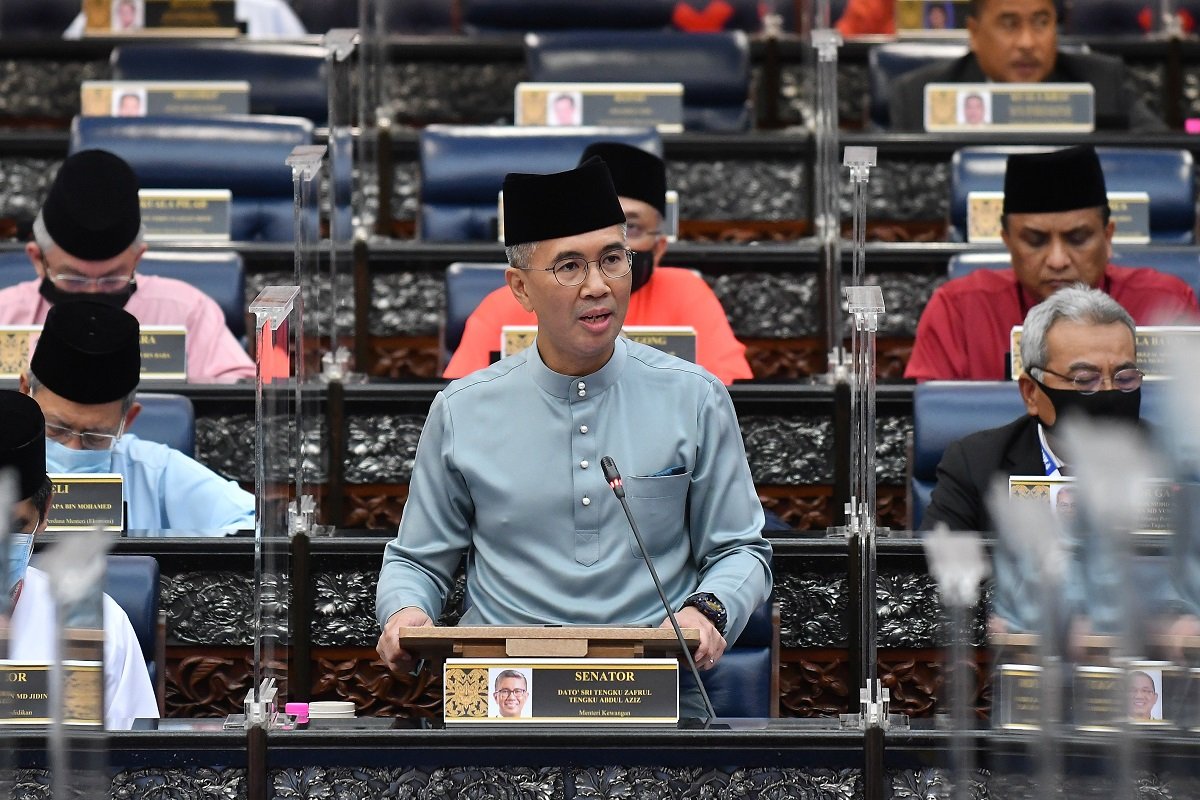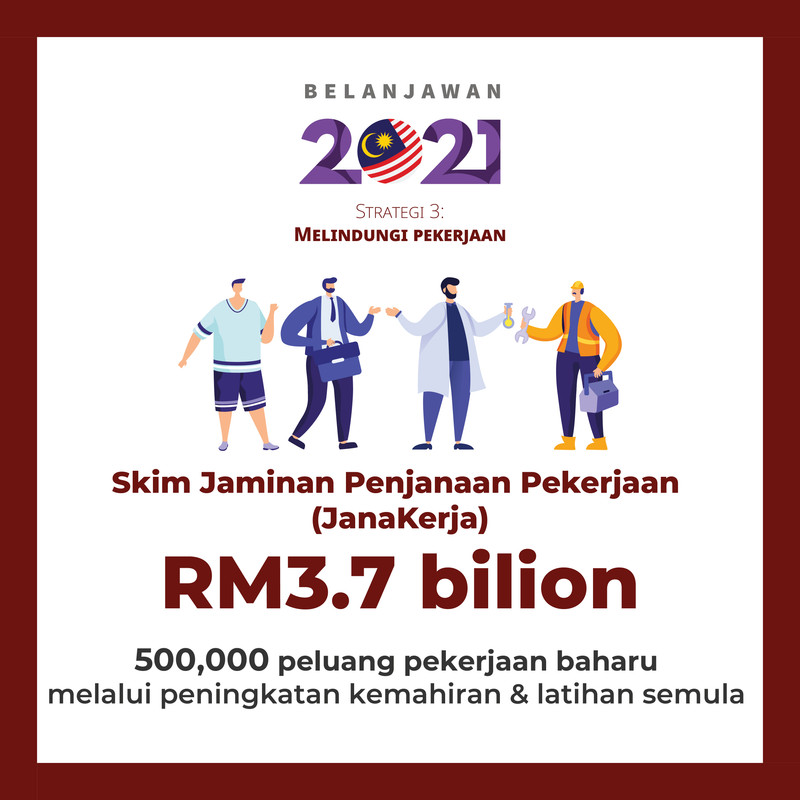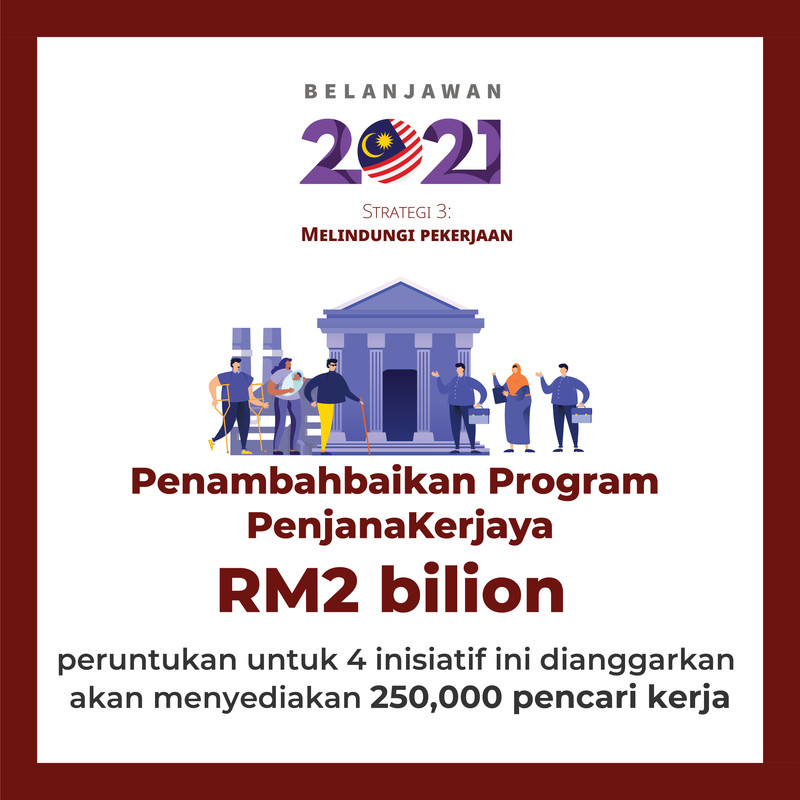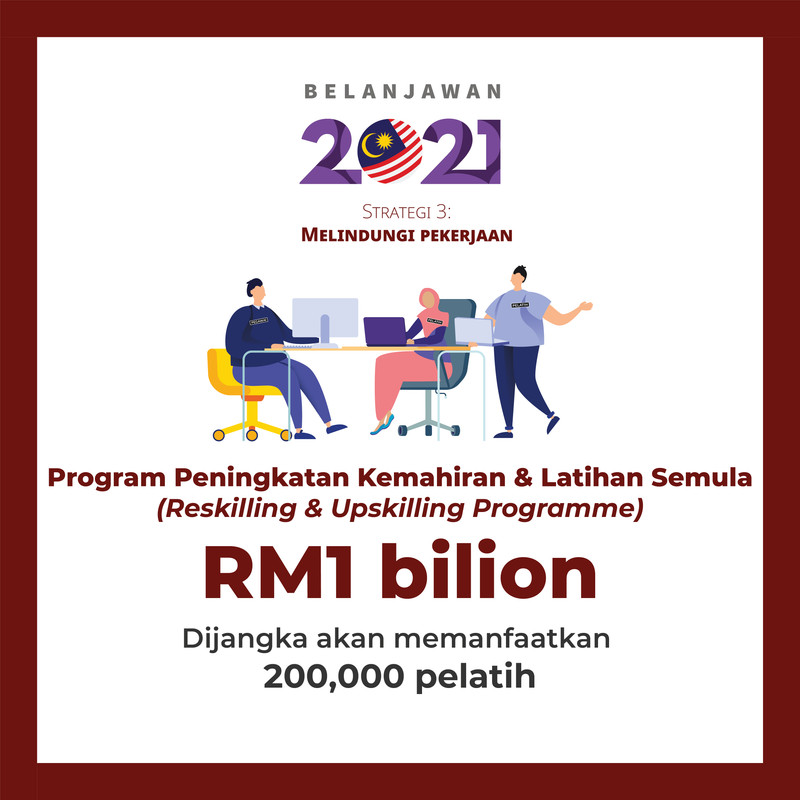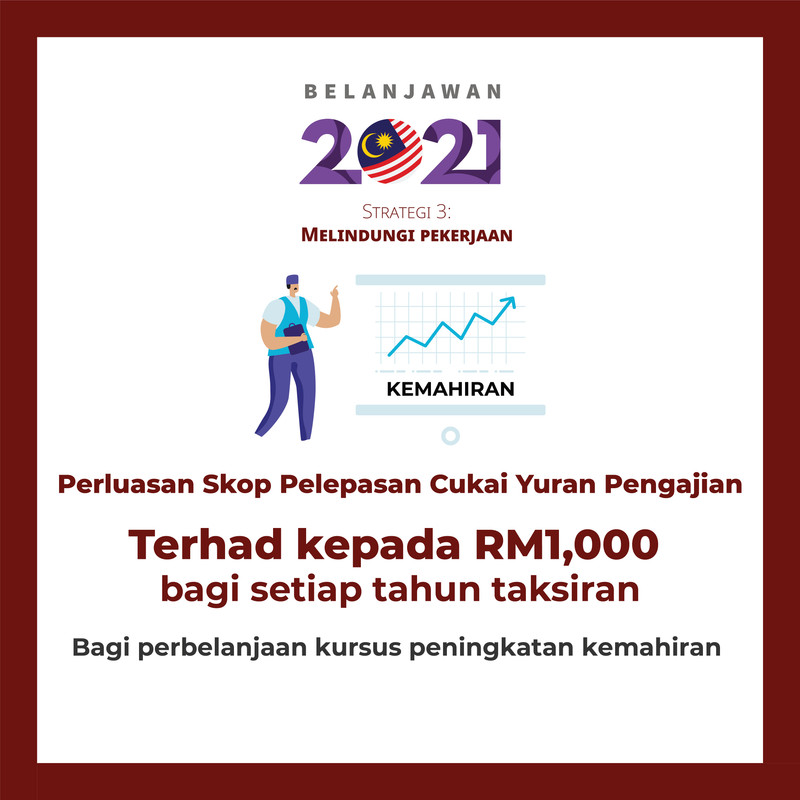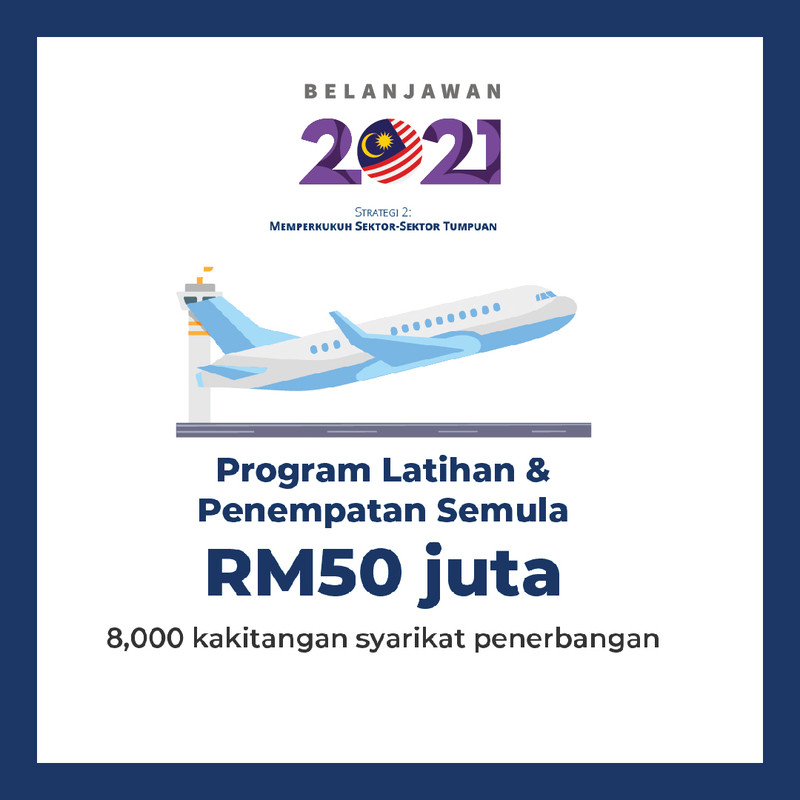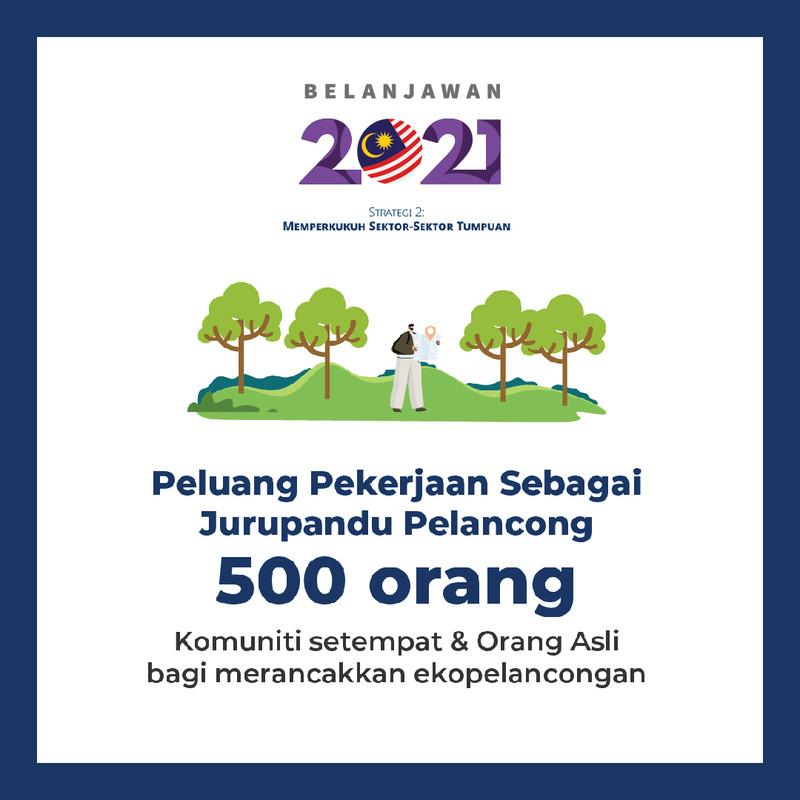#Budget2021: 9 Things The Government Is Doing To Help Create More Jobs For Malaysians
Strategy 3 of Budget 2021, Generating and Retaining Jobs, aims to help create more jobs for Malaysians.
On Friday, 6 November, Finance Minister Tengku Zafrul Aziz tabled #Budget2021. With a value of RM322.5 billion, this year's budget is the largest in history.
"The year 2020 is a tumultuous period for Malaysia, marked by many challenging circumstances. Never before in modern history has an epidemic wrought such profound changes. The spread of COVID-19 has not only taken people’s lives but stifled economies," he said.
He also pointed out that the International Monetary Fund (IMF) has described the COVID-19 pandemic as the worst economic crisis since the 1930s' Great Depression, upending the economies of over 150 countries.
As a result, many Malaysians have lost their jobs, with the average unemployment rate in Malaysia increasing to 5.3% in May 2020, leaving around 820,000 people unemployed
However, as a result of the PRIHATIN and PENJANA initiatives that were implemented earlier this year, the unemployment rate has reduced to 4.7% in August 2020.
The country's GDP is also showing signs of recovery, having increased from -28.6% in April to -3.2% in June.
The government wants to keep these signs of improvement going, which is why Strategy 3 of Budget 2021, Generating and Retaining Jobs, aims to help create more jobs for Malaysians.
Besides Strategy 3, there are several other measures under different strategies with the same aim.
Here are all the measures the government is planning to implement to create more employment opportunities:
1. The Skim Jaminan Penjanaan Pekerjaan (JanaKerja) initiative will be launched to create more job opportunities
This will provide 500,000 new job opportunities, including skills development and retraining programmes worth RM3.7 billion.
2. A total of RM2 billion will be allocated to PenjanaKerjaya, a hiring incentive programme under PERKESO (Pertubuhan Keselamatan Social)
This is expected to increase employment opportunities for 250,000 job-seekers.
Here's a breakdown of what it entails:
- Incentive for employees earning RM1,500 and above to be increased. Instead of the previous flat rate of RM800 per month, the incentive will now be 40% of their monthly income, subject to a maximum of RM4,000.
- To encourage employment for the disabled, those who have been unemployed for a long term, and retrenched workers, employers will be given an additional incentive to hire these affected groups. This incentive is equivalent to 20% of the employee's monthly income, making the total incentive for employers 60%.
- A special incentive of 60% of monthly wages will be provided for sectors with a high reliance on foreign workers, such as construction and plantations. 40% will be given to the employer, while 20% will be a wage top-up to the local worker replacing the foreign worker.
The above three incentives will be given for a six-month period.
- For those employed under PenjanaKerjaya, the maximum training rate which can be claimed by employers will be increased from RM4,000 to RM7,000. This will enable workers to take up high skilled training and professional certifications.
3. Reskilling and upskilling programmes will continue to be implemented. A total of RM1 billion will be allocated for this, benefitting 200,000 trainees.
Here's the breakdown:
- RM150 million will be allocated for the Ministry of Higher Education professional certification (KPT-PACE). Through this, fresh graduates will be eligible to a RM3,000 voucher each to pursue a professional certification at public or private universities. 50,000 graduates are expected to benefit from this programme.
- To implement trainings in collaboration with private-sector employers, RM100 million will be allocated to the Human Resources Development Fund (HRDF).
- RM100 million will be allocated to Malaysia Digital Economy Corporation (MDEC). This is so they can transition the existing workforce to fill the growing needs in the ICT industry.
- RM100 million will be allocated to regional corridor authorities Iskandar Regional Development Authority (IRDA) and Sabah Economic Development and Investment Authority (SEDIA). This is to help them provide new skills training to workers who have been badly affected by the closure of borders to foreign tourists, so they can secure new jobs or sources of income.
- RM30 million will be allocated to Perbadanan Hal Ehwal Bekas Angkatan Tentera (PERHEBAT) for entrepreneurship training programmes. 12,000 veterans of the Malaysian Armed Forces will benefit from this.
4. To encourage Malaysians to upskill and explore new areas of employment, the scope of relief for tuition fee will be expanded
Limited to RM1,000 for each year of assessment, it will now also cover expenses incurred for attending upskilling courses provided by certified bodies.
5. With an allocation of more than RM700 million, the government will be introducing MySTEP (Short-term Employment Programme)
Starting January 2021, this initiative will offer 50,000 job opportunities on a contract basis in the public sector and Government Linked Companies (GLC).
Under this initiative, 35,000 job opportunities will be offered in the public sector. The priority is to fill up positions such as nurses, medical attendants, social welfare officers, and temporary teachers.
As for the GLCs, they will be offering 15,000 job opportunities that prioritise technical and financial fields. They will also be opening up chances for new graduates to participate in apprenticeship programmes.
6. The government will extend the implementation of the Wage Subsidy Programme for another three months, with a more targeted approach
The Social Security Organisation (SOCSO) Wage Subsidy Programme was part of the government's previous stimulus packages. Through it, wage subsidy was provided for up to nine months.
As of 31 October 2020, the government has channelled RM12.5 billion to fund this programme. It has helped 2.7 million workers, and more than 300,000 employers.
However, many employees are still affected, especially in the tourism sector, which is why the government is extending the Wage Subsidy Programme for another three months.
This time, it will have a more targeted approach, specifically to help the tourism sector. This includes the retail sector, at a rate of RM600 per month for workers earning RM4,000 and below. Plus, the limit of 200 employees per application will be increased to 500 employees.
A total of RM1.5 billion will be allocated for this, and it is expected to help about 70,000 employers and 900,000 employees.
7. Training and placements will be provided for 8,000 employees of airline companies in Malaysia
RM50 million will be allocated for this, as the government is aware that tourism is one of the sectors most affected by COVID-19.
8. Employment opportunities will be provided for 500 people in the local and Orang Asli communities
To boost the ecotourism segment, they will be given employment opportunities as tour guides at all national parks.
9. The government announced a Grant Khas Prihatin of RM1,000, which will be given to 20,000 traders and hawkers in Sabah
This is in response to the concerns of traders and hawkers in Sabah who have been deeply affected by the lack of tourists, causing them to lose income. The Grant Khas Prihatin will also be given to taxi drivers, e-hailing, rental cars, and tour drivers in Sabah.
For more information on #Budget2021 and other government initiatives, head over to the Ministry of Finance website
